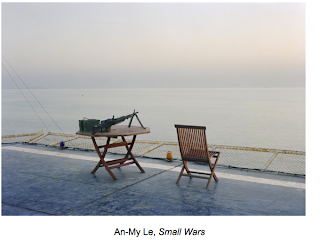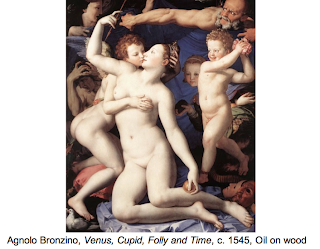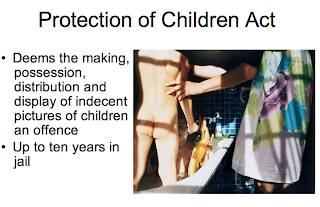graphicartsmag.com
SIGHT: Seed Paper
Seed paper, like varieties available at Botanical Paperworks (www.botanicalpaperworks.com), is an innovative paper technology whereby seeds are embodied within handmade paper products. Once the paper is used for its intended purpose (business cards, promotional items, wedding initiations, etc.) it can be planted and watered to produce new life. The paper itself is handmade from post-consumer waste, and once its expected life as a printed product is over, all that remains are beautiful flowers, herbs or vegetables. It is a sustainable process that leaves behind no waste. The paper products sold by Botanical Paperworks can be passed through a home inkjet printer, increasing opportunities for consumer end use.
TOUCH: Personalized Flip Books
Personalized flipbooks are amazing little keepsakes that capture favourite memories. There are several online printers who provide this service and create customized, variable data flipbooks. Customers simply upload a short video they want to capture and image stills are extracted, printed and bound into book format. The price is right too, with some flipbooks selling for under $15 (like the ones at flipclips – www.flipclips.com).
TASTE: Edible Inks and Papers
SMELL: Canadian Tire’s Scentvertising
Here’s a new take on an old process! In a series of full-page Canadian home magazine advertisements, Canadian Tire harnessed the power of “scentvertising”. They employed visually appealing ads, printed on traditional perfumed peel-back scent flaps, with aromas such as “freshly mowed grass” and “charcoal barbeque”. On the back of the advertisements were coupons for products to get ready for spring. This clever ad provides an innovative sensory experience to get consumers excited about spring-related products at Canadian Tire.
 Kelli Anderson is a Brooklyn-based designer and artist who works with a variety of media including photography, digital design and print. (She even has her own letterpress from 1919 housed in her apartment!). One of her recent projects is “The Paper Record Player” and I had the pleasure of speaking with Kelli about this project.
Kelli Anderson is a Brooklyn-based designer and artist who works with a variety of media including photography, digital design and print. (She even has her own letterpress from 1919 housed in her apartment!). One of her recent projects is “The Paper Record Player” and I had the pleasure of speaking with Kelli about this project.
“The Paper Record Player” is a feat of paper engineering that is not only functional, but also captivatingly beautiful. It was designed and created for a friend’s wedding invitation, where recipients received a neatly packaged booklet that, when opened, morphed into a self-contained record player made almost entirely of paper.
“Part of The Paper Record Player’s charm is the awkward, handmade feel. People feel like they can mess with it and use it with their hands.”
The record itself was a flexidisc (a thinner and cheaper alternative to vinyl records that were manufactured at Pirate Press in San Francisco), however the needle arm, turntable base and booklet structure are all comprised of paper. A simple set of three instructions guided invitees to fold the paper record arm so that the (sewing) needle could make contact with the record at a 90-degree angle. Once the needle makes contact, the user then spins the record manually at 45 rpm to hear the song play. There is no speaker or added amplifier contained within the record player. The folded, thin paper arm facilitates vibration allowing the sound to be naturally amplified through this crafty device. All pages of this piece were simply sewn onto the cover stock, binding all components together.
The project took a period of four months to complete from original concept to the accomplishment of 200 printed and assembled copies. Lots of prototyping took place during this time and a few paper engineering-specific issues cropped up. One issue involved unwanted friction produced from manually spinning the disc on the inside back cover, thereby creating excess noise. Kelli’s clever solution was to laminate the back cover to reduce friction and therefore reduce the noise.
When Kelli was asked if she would venture into another paper engineering project, her response was a resounding, “Yes, absolutely! But I have to recover from The Paper Record Player first.”
Check out the record player in motion: http://bit.ly/ghRyow .
You can find Kelli on the web at www.kellianderson.com.
These and other innovations in novelty printing are exciting for the graphic communications industry and push the boundaries of how we understand print to exist in our everyday lives. Whether you see printed matter on a page, feel it in the form of a print-on-demand flipbook, taste it in your birthday cake, smell it in a magazine or hear it in a wedding invitation, there are so many interesting ways to interact with printed pieces.
Invisible inks
uk.games.yahoo.com
So how do you do it? Depending on the security you need, the materials you have, and the amount of time and effort you want to put in, there's a variety of options. Almost any kind of acid will work as invisible ink, as long as it dries clear: gently warm the paper (over a hot light bulb, say) and the heat will oxidize the acid, revealing the hidden message. Lemon juice, vinegar, wine, and milk are all easy-to-source choices.
But that's not going to do a great job of keeping your secrets; applying heat is the first trick an enemy agent will try. More complex inks exploit chemical reactions to do their developing. Write your message in a clear substance, then later coat the paper in a special developer that sparks a chemical reaction, changing the color of the ink and revealing your scrawls. These are harder to improvise at home, though red cabbage water (the liquid left behind after you boil red cabbage) serves as a developer for a number of household chemicals including ammonia and lemon juice, and iodine does the same for starch.
Other invisible inks only show up when they fluoresce under a blacklight. Bodily fluids work here, though in the interests of hygiene we don't advise too much experimentation. Laundry detergents usually contain optical brighteners that will serve the same purpose, though, and commercially available security pens are also worth a go.
SOUND: The Paper Record Player
“The Paper Record Player” is a feat of paper engineering that is not only functional, but also captivatingly beautiful. It was designed and created for a friend’s wedding invitation, where recipients received a neatly packaged booklet that, when opened, morphed into a self-contained record player made almost entirely of paper.
“Part of The Paper Record Player’s charm is the awkward, handmade feel. People feel like they can mess with it and use it with their hands.”
The record itself was a flexidisc (a thinner and cheaper alternative to vinyl records that were manufactured at Pirate Press in San Francisco), however the needle arm, turntable base and booklet structure are all comprised of paper. A simple set of three instructions guided invitees to fold the paper record arm so that the (sewing) needle could make contact with the record at a 90-degree angle. Once the needle makes contact, the user then spins the record manually at 45 rpm to hear the song play. There is no speaker or added amplifier contained within the record player. The folded, thin paper arm facilitates vibration allowing the sound to be naturally amplified through this crafty device. All pages of this piece were simply sewn onto the cover stock, binding all components together.
The project took a period of four months to complete from original concept to the accomplishment of 200 printed and assembled copies. Lots of prototyping took place during this time and a few paper engineering-specific issues cropped up. One issue involved unwanted friction produced from manually spinning the disc on the inside back cover, thereby creating excess noise. Kelli’s clever solution was to laminate the back cover to reduce friction and therefore reduce the noise.
When Kelli was asked if she would venture into another paper engineering project, her response was a resounding, “Yes, absolutely! But I have to recover from The Paper Record Player first.”
Check out the record player in motion: http://bit.ly/ghRyow .
You can find Kelli on the web at www.kellianderson.com.
These and other innovations in novelty printing are exciting for the graphic communications industry and push the boundaries of how we understand print to exist in our everyday lives. Whether you see printed matter on a page, feel it in the form of a print-on-demand flipbook, taste it in your birthday cake, smell it in a magazine or hear it in a wedding invitation, there are so many interesting ways to interact with printed pieces.
Invisible inks
uk.games.yahoo.com
So how do you do it? Depending on the security you need, the materials you have, and the amount of time and effort you want to put in, there's a variety of options. Almost any kind of acid will work as invisible ink, as long as it dries clear: gently warm the paper (over a hot light bulb, say) and the heat will oxidize the acid, revealing the hidden message. Lemon juice, vinegar, wine, and milk are all easy-to-source choices.
But that's not going to do a great job of keeping your secrets; applying heat is the first trick an enemy agent will try. More complex inks exploit chemical reactions to do their developing. Write your message in a clear substance, then later coat the paper in a special developer that sparks a chemical reaction, changing the color of the ink and revealing your scrawls. These are harder to improvise at home, though red cabbage water (the liquid left behind after you boil red cabbage) serves as a developer for a number of household chemicals including ammonia and lemon juice, and iodine does the same for starch.
Other invisible inks only show up when they fluoresce under a blacklight. Bodily fluids work here, though in the interests of hygiene we don't advise too much experimentation. Laundry detergents usually contain optical brighteners that will serve the same purpose, though, and commercially available security pens are also worth a go.
1.Lemon Juice
Lemon juice is a great example of a ‘heat-fixed’ invisible ink. An invisible lemon juice message, scrawled onto a piece of paper, can be developed by exposure to any heat source such as a radiator, an iron or a 100W light bulb.
Many acidic household liquids (Coca Cola, wine, apple, orange and onion juice included) behave in quite the same way, as do a number of bodily fluids. During the Nazi occupation of Poland, people frequently sent postcards containing hidden messages written in saliva and even urine.
Equipment & ingredients: you’ll find them in most local grocers
Suitable for: anyone
Ease of use: really easy
2.Vinegar
Vinegar is another household liquid that can be used as an invisible ink. Unlike lemon juice, messages written in vinegar are best developed by a chemical reaction. Red cabbage, which contains a pigment called flavin (an anthocyanin), can be used in solution to develop vinegar and other strong acids. Red cabbage solution turns a vinegar message dark red.
Equipment & ingredients: ubiquitous
Ideal for: anyone wanting to hide a message
Ease of use: simple
3.Cerium Oxalate
In 2006, two researchers from Michigan State University finally discovered the secret behind the Stasi’s invisible ink. The Stasi would sandwich a piece of material impregnated with cerium oxalate between two sheets of paper, writing on the top sheet to transfer a chemical message onto the sheet below. A solution of manganese sulphate, hydrogen peroxide and other chemicals could then be used to develop the message, turning it orange.
During World War II, numerous chemicals were used as invisible inks: copper sulphate, developed with sodium iodide; iron sulphate, developed with sodium carbonate; and sodium chloride (common table salt), developed with silver nitrate, were some of the more common. The search of one Nazi spy’s hotel room uncovered several large and unusual looking keys, which turned out to be invisible ink writing implements, with hidden nibs and chambers for ink.
Equipment & ingredients: access to a lab would help
Ideal for: anyone wanting to hide sensitive information
Ease of use: time consuming
4.UV
Specially formulated UV inks are invisible in daylight, but glow under UV light sources. UV pens filled with such inks are used to mark items in case of theft, products in manufacturing and hands or tickets for readmission to events, particularly at nightclubs.
Many common substances, from laundry detergents to soap and bodily fluids, can be used as crude invisible inks, as they fluoresce under UV light. Photocopiers can be used to develop messages written in these inks, due to the UV components in their scanner heads.
Equipment & ingredients: easy to pick up UV lights and pens
Ideal for: hiding information at school or work
Ease of use: simple and reliable
5.Printer Ink

Invisible UV ink is also available for use in printer cartridges and is used for printing information onto business forms, so as not to clutter the visible content. The United States Postal Service also uses UV ink to print barcodes and routing information onto mailed envelopes.
By following the instructional video above, you can make your own makeshift invisible inkjet printer cartridge with just an ordinary inkjet cartridge, four invisible ink pens and a syringe. One little tip: make sure you wear gloves!
Equipment & ingredients: easily sourced from most electronics stores
Ideal for: home and office use
Ease of use: ridiculously
Invisible UV ink is also available for use in printer cartridges and is used for printing information onto business forms, so as not to clutter the visible content. The United States Postal Service also uses UV ink to print barcodes and routing information onto mailed envelopes.
By following the instructional video above, you can make your own makeshift invisible inkjet printer cartridge with just an ordinary inkjet cartridge, four invisible ink pens and a syringe. One little tip: make sure you wear gloves!
Equipment & ingredients: easily sourced from most electronics stores
Ideal for: home and office use
Ease of use: ridiculously
6. Pure Distilled Water
When there’s nothing else around, even water can be used as invisible ink. Writing a message in water disturbs the surface fibres on a piece of paper. Such a message can then be developed using the fumes from heated iodine crystals. The marks made by the water turn brown, as iodine particles stick more readily to disturbed areas. This method is not perfect however, as exposure to direct sunlight or bleach can erase your message completely.
7. Disappearing Ink

Disappearing ink is unlike any other ink in this list: it begins visible, but soon disappears. The normally colourless thymolphthalein, which turns blue when mixed with the base sodium hydroxide, is a great example. Over time, the base reacts with carbon dioxide in the air and its pH drops. Once it ceases to be a base, the blue colour disappears. Ink like this is used by events managers on non-reusable passes – and by practical jokers in their water pistols!
Equipment & ingredients: thymolphthalein may be tricky to source
Ideal for: good for using on single-use, time-sensitive identity cards
Ease of use: once setup, it’s easy
Read more about 7 Amazing Types Of Invisible Ink & How You Can Use Them Cartridge Save Blog by CreativeCloud from the UK's leading supplier of printer cartridges
Disappearing ink is unlike any other ink in this list: it begins visible, but soon disappears. The normally colourless thymolphthalein, which turns blue when mixed with the base sodium hydroxide, is a great example. Over time, the base reacts with carbon dioxide in the air and its pH drops. Once it ceases to be a base, the blue colour disappears. Ink like this is used by events managers on non-reusable passes – and by practical jokers in their water pistols!
Equipment & ingredients: thymolphthalein may be tricky to source
Ideal for: good for using on single-use, time-sensitive identity cards
Ease of use: once setup, it’s easy
Read more about 7 Amazing Types Of Invisible Ink & How You Can Use Them Cartridge Save Blog by CreativeCloud from the UK's leading supplier of printer cartridges

















.jpg)











































































